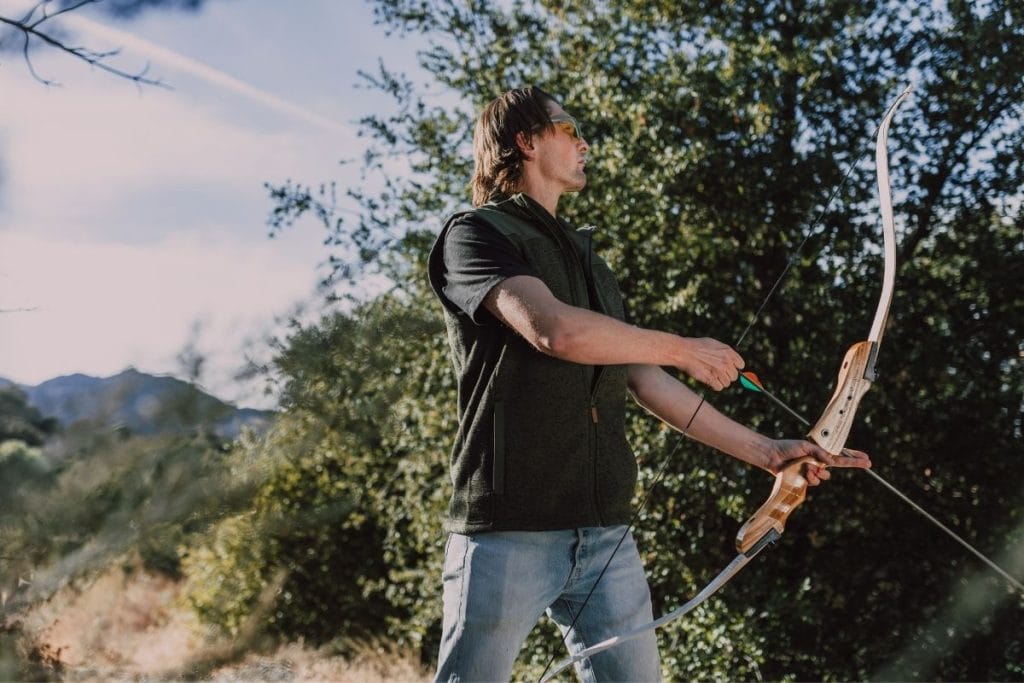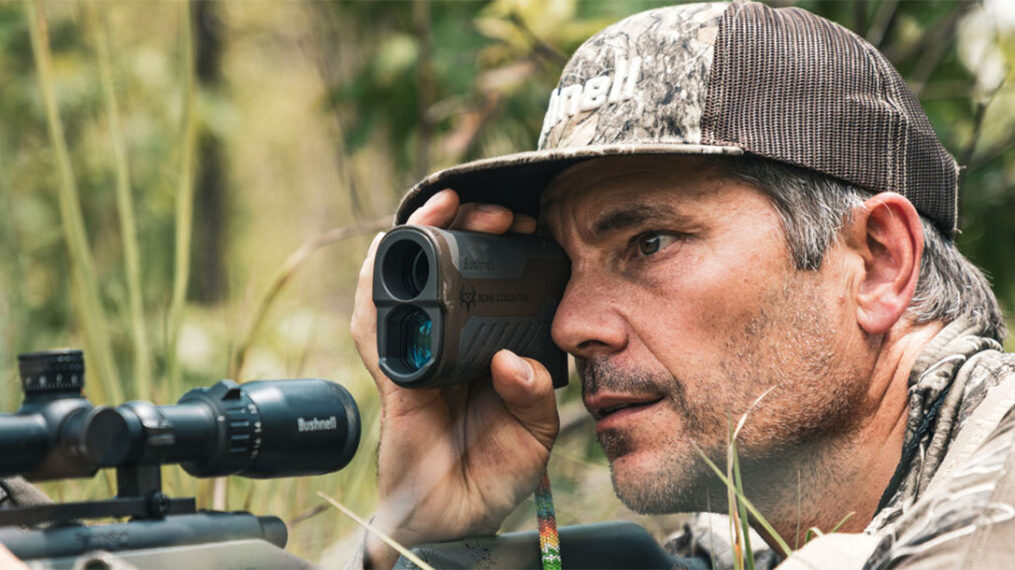In archery, precision and consistency are paramount. The archer is defined not by merely shooting arrows but by flawlessly replicating proper technique repeatedly.
Yet hitting distant targets remains archery’s supreme challenge. Mastering long-range accuracy embodies expertise. An archer’s most outstanding achievement is launching arrows in whispering flights across vast spans to kiss far-off marks precisely.
Determining a bow’s maximum range involves intricacies. Subtle environmental factors and archers’ esoteric knowledge intertwine complexly. But scholarly diligence guides us through this maze.
Consider a 40-pound recurve bow. In windless conditions, it can impressively send an arrow 280 yards. This illustrates the symbiosis between human skill and archaic craft.
The many variables influencing range merit exploration, each thread in archery’s rich tapestry.
What Else Affects A Bow’s Maximum Distance?
As we mentioned earlier, there are plenty of different environmental factors that can influence the maximum distance you can achieve with any given bow.
There are even plenty of things about the bow itself that would make a significant difference.
Let’s go over some of these factors now:
Bow Style
In this article, we’ve already touched on recurve bows, but it’s worth noting that they represent just one style among many that archers might choose.
Take the longbow, for instance, which can shoot arrows to greater distances than a recurve bow, even at the same draw weight.
Indeed, when it comes to maximum shooting range at given draw weights, recurve bows tend to have the shortest range in comparison to other bow types.
Bow Material
While selecting a bow, the construction material is a somewhat secondary consideration.
Different materials have varying capacities for energy storage, affecting how much energy is imparted to the arrow and, thus its flight distance.
Nonetheless, the recurve bows available at most sporting goods stores and online retailers are constructed from a combination of materials optimized for performance.
read.. how to make you own fiberglass bow
Consequently, it’s rare to come across modern recurve bows crafted solely from wood.
Overall, the homogeneity in materials used across contemporary recurve bows means that this aspect is not as crucial to your decision as it might once have been.
Arrow Construction
As you might expect, the way the arrow is designed also has a massive impact on how far it will fly.
After all, this is the projectile itself that we’re trying to achieve distance with.
Aerodynamics are very important here as the arrow is designed to fly with as little wind resistance as possible.
The most important thing about the arrow that affects its aerodynamic performance is the fletchings.
These are the small fins you see sticking out at the rear end of the arrow.
They are designed to make the arrow fly in as straight a line as possible and to counteract any effects of wind altering the shot.
Arrow Weight
As important, if not more important, than the aerodynamic design of an arrow is its weight.
Just like with any traveling object like a car or a bicycle, the lighter they are, the further they will generally travel.
This is simply because gravity has less of an effect on the projectile, allowing it to achieve greater speeds and travel greater distances.
Of course, this isn’t always the case with archery and the lightest arrow won’t always travel the furthest in all conditions.
Lighter arrows are much more susceptible to the effects of environmental factors like wind changing their flight.
Similarly, a lighter arrow won’t deliver nearly as much impact when it actually reaches its target as a heavy arrow would.
Therefore, while a lighter arrow might be able to achieve a greater maximum distance, it won’t always be the go-to choice for archers.
Instead, you must find a balance of the perfect weight based on all of these considerations.
Weather
Of course, one of the most important influences on maximum shot distance is the weather. In particular, the wind will have the greatest effect.
For example, if an archer is shooting North and there is a strong wind blowing North, their arrow will travel much further than it normally would.
Similarly, if the wind is blowing South, the arrow won’t travel as far.
We mentioned earlier that arrows are designed to be aerodynamic and minimize the effects of wind resistance but there is no possible way to eliminate all of the effects of wind on the arrow.
It may also be worth considering other weather factors like rain, hail, and snow.
While it’s not likely that a single drop of rain hitting an arrow mid-flight would affect the shot distance too much, it would slow it down somewhat.
A more influential weather factor is air humidity or density.
If the air around the arrow is more humid or denser, the effects of wind resistance will be even greater, thus slowing the arrow down more.
Interestingly, because cold air is denser than hot air, this also means that air temperature will affect the maximum distance of a shot.
This means that your arrow will fly further on average on a hot day than it will on a cold day.
Draw Weight
The final factor that will determine an arrow’s distance with any given shot is the amount of weight used in the draw.
This is simply the amount of force exerted to pull back the string while setting up a shot.
The effect of draw weight on the distance an arrow travels is therefore pretty obvious.
Most bows will have a maximum draw weight because of the way they are designed, so a recurve bow with a maximum draw weight of 40 lbs will have a certain average maximum shot distance.
Final Thoughts
As you can probably tell by now, there’s a lot that goes into determining how far any bow can fire an arrow.
Of course, draw weight has a lot to do with it but there’s plenty more to consider too.
See if you can spot any of these factors affecting your shot distance next time you shoot!







